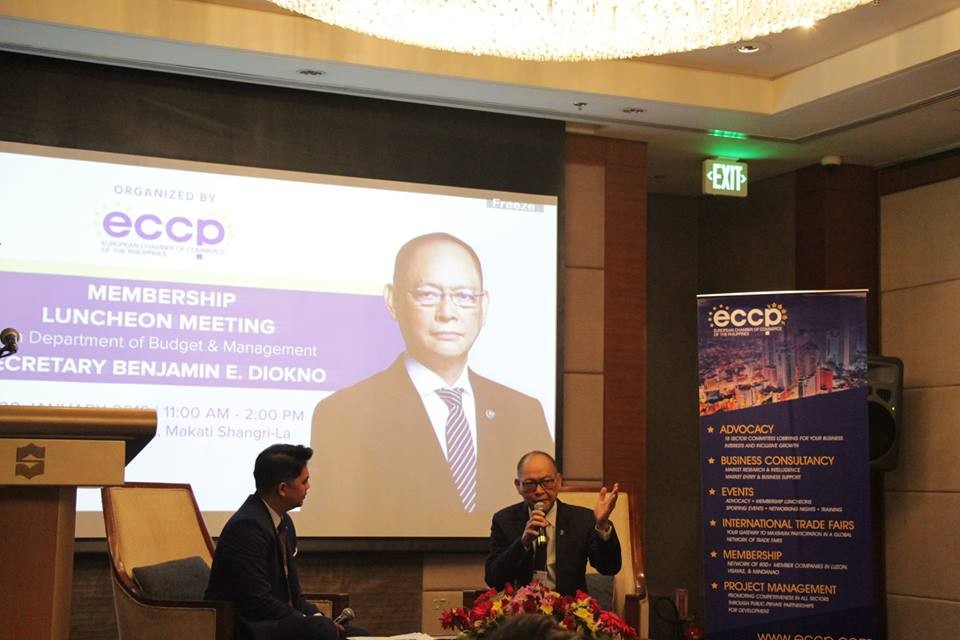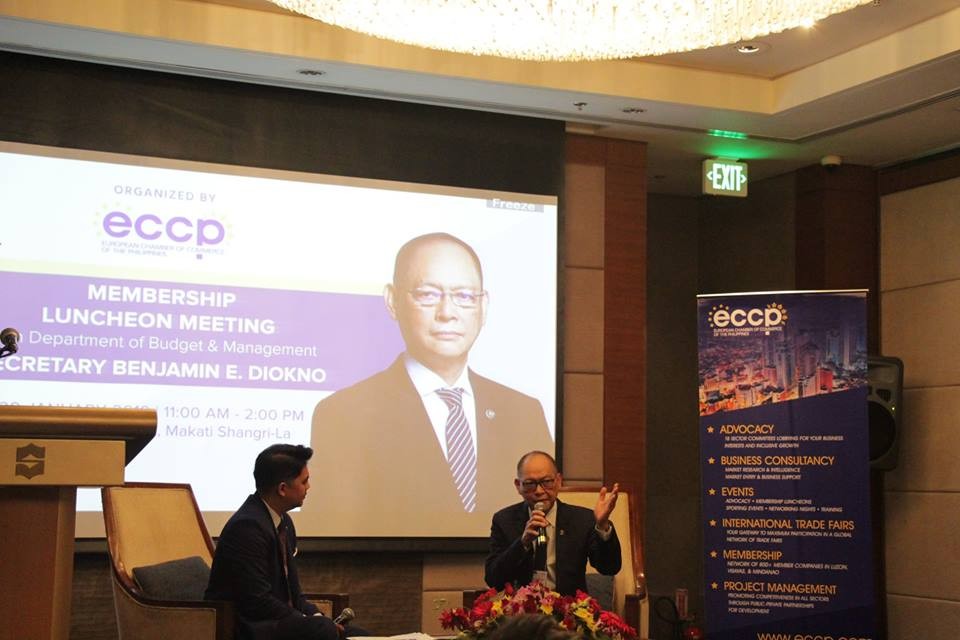
Last 30 January, the ECCP held a Luncheon Meeting with Department of Budget and Management Secretary Benjamin Diokno, who presented an overview of the Philippine fiscal program and reforms, 2019 budget, and report on national expenditures, among others. Key discussion points are as follows:
- National budget is projected to steadily increase, from P3.757 trillion in 2019 to P5.3 trillion in 2022; an augmented share of GDP from 19.3% to 20.6%
- Debt is slow and declining. Debt to GDP ratio was at 42.1% in 2017, and is seen to decrease at 36% in 2022.
- Total 2019 budget is P3.757 or 19.3% of the GDP.
- Infrastructure remains to be top priority with an allocation of P909.7 billion for 2019, or 4.7% of the GDP. There is also a forecasted increase of infrastructure appropriations of 7% of the GDP in 2022.
- Other key areas of budget allocation are education, social welfare, local government, and national defense.
- The government has been implementing cash-based budgeting system since 2017, which serves as an international best practice that is being used by three-fourths of the OECD countries.
- The Budget and Treasury Management System (BTMS) aims to provide for a harmonized system in keeping budget information and increasing capacity to report data in real term. This was piloted with BOT in 2017; rolled out to DPWH, DOH, DOTr, DENR in 2018; and is planned to cover all other government agencies this 2019.
- Project DIME monitors high-value government projects by comparing accomplishments and utilisation of budgets. Uses drones and satellites that is able to reach even far flung areas.
- The government aims to sustain momentum and be one of the fastest growing economies in the world, and projects a 7-8% GDP growth in the next 4 years, with the help of the implementation of an increasingly an expansionary fiscal program

